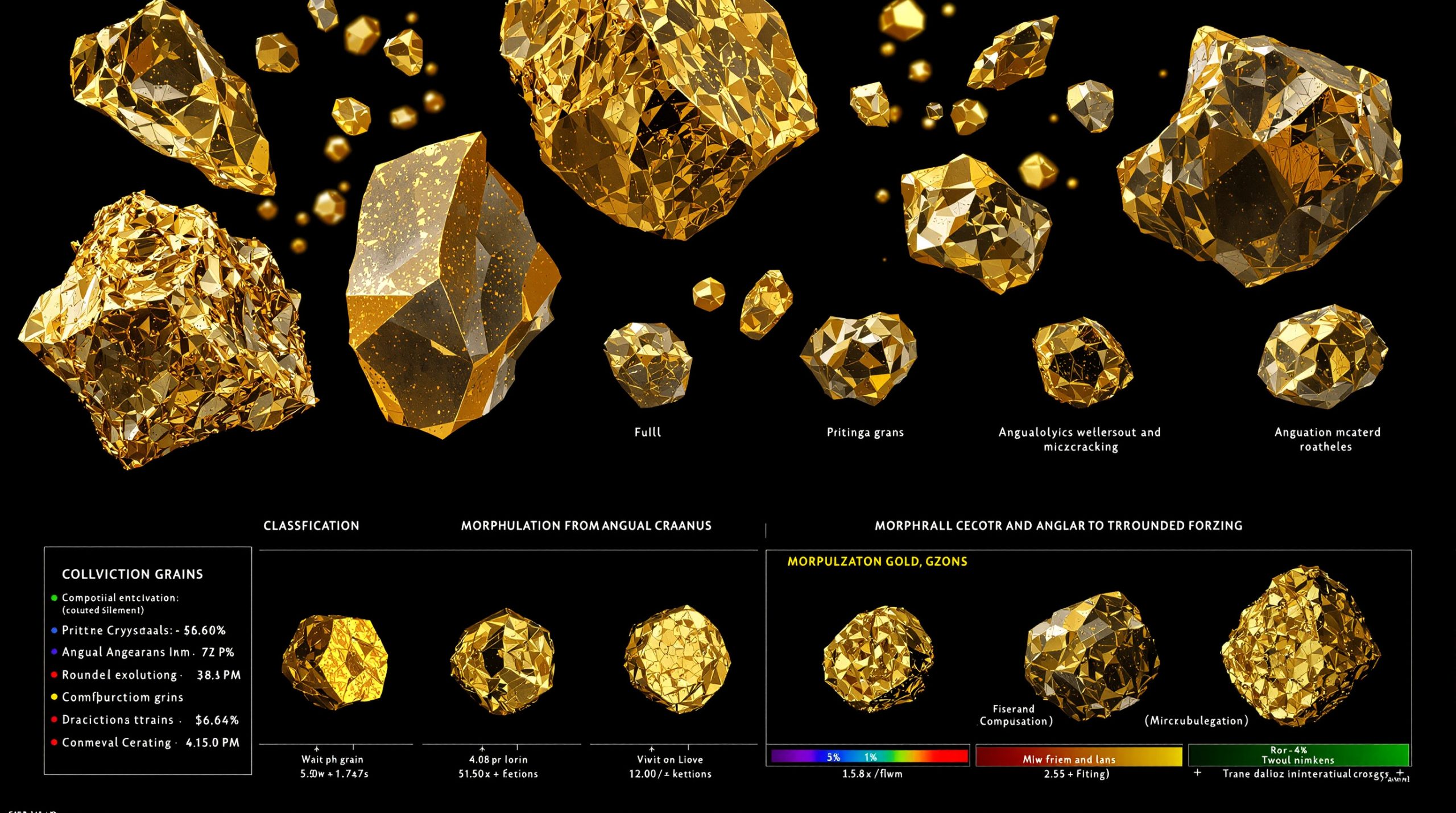Understanding Vault Minerals: A Strategic Growth Story
Vault Minerals represents one of the most significant developments in the Australian gold mining sector in recent years. Born from strategic vision rather than speculative promise, this producer has quickly established itself as a force to be reckoned with in the precious metals space. As gold prices reach all-time highs, companies like Vault are strategically positioning themselves for maximum benefit.
What is Vault Minerals and how was it formed?
The merger that created a production powerhouse
Vault Minerals emerged in mid-2024 through the strategic merger of two established Australian miners: Silver Lake Resources and Red 5. Unlike many new entrants in the mining sector that arrive with promises but no production, Vault began its journey with significant operational assets already generating revenue.
The merger strategically combined complementary asset portfolios, management expertise, and operational capabilities to create an intermediate gold producer with immediate scale advantages. This approach provided shareholders with instant exposure to production rather than the extended timelines typically associated with exploration-stage companies.
With gold price surge explained throughout 2024-2025, the timing of this corporate combination proved advantageous, allowing the newly formed entity to capitalize on favorable market conditions from day one.
Current operational footprint
Vault's portfolio is anchored by three producing mining hubs across Western Australia:
- Leonora Operations: The flagship asset with substantial reserves and expansion potential
- Deflector Complex: A high-grade gold-copper underground operation
- Mount Monger: A mature mining center with established infrastructure
Beyond Australia, the company maintains a strategic foothold in North America through its Sugar Zone property in Canada, positioning it for geographic diversification and future growth opportunities.
This multi-asset approach distinguishes Vault from single-mine operators, providing operational redundancy, risk mitigation, and multiple avenues for organic growth. The production-first business model generates substantial operating cash flow, creating a virtuous cycle where existing operations fund future expansion.
How does Vault's financial position support its growth strategy?
Capital strength and reinvestment focus
At the core of Vault's strategic advantage lies its robust balance sheet. With approximately $575 million in cash and minimal debt, the company operates from a position of financial strength uncommon among mid-tier gold producers.
This capital position provides several strategic advantages:
- Ability to fund major expansion initiatives internally
- Flexibility to navigate commodity price volatility
- Capacity to pursue opportunistic acquisitions
- Protection against operational disruptions
Rather than immediately deploying this capital for acquisitions, management has prioritized organic growth through expanding existing operations. This disciplined approach focuses on extracting maximum value from current assets before pursuing external opportunities.
Financial Perspective: The self-funding growth model reduces dilution risk for shareholders while maintaining strategic optionality. By reinvesting operating cash flow into high-return internal projects, Vault aims to create a sustainable growth trajectory without overleveraging the balance sheet.
Production economics driving profitability
Vault's financial performance is underpinned by its diversified production base. The combination of gold-focused operations with copper byproduct credits creates a natural hedge against single-commodity exposure.
The economic profile of Vault's operations demonstrates several favorable characteristics:
- Multiple production centers reducing single-asset risk
- Established infrastructure minimizing capital intensity
- Grade profile improvements enhancing margin potential
- Copper credits offsetting gold production costs
With gold market technical analysis showing prices trading above A$3,000 per ounce during 2025, the company's operating margins have remained robust, generating substantial free cash flow to fund its ambitious growth initiatives.
What makes Leonora operations the cornerstone of Vault's future?
Resource scale and longevity
The Leonora operations represent Vault's crown jewel, with a resource base that provides exceptional production visibility. The asset contains:
- Ore Reserves: 2.24 million ounces of gold
- Mineral Resources: Over 6 million ounces of gold
- Mine Life: 10-year base case with expansion potential
This substantial resource endowment provides Vault with operational stability and long-term planning capability. The 10-year mine life estimate is based on current reserves only, with significant potential to extend through resource conversion and exploration success.
The scale of Leonora's resource base positions it among the more substantial gold deposits in Australia, providing a foundation for sustained production growth over the coming decade.
Strategic expansion initiatives
Recognizing Leonora's strategic importance, Vault has implemented a multi-phase expansion plan to maximize the asset's value:
-
Stage 1 Expansion ($80 million investment):
- 20% increase in processing capacity
- Enhanced recovery rates through process optimization
- Infrastructure upgrades supporting future growth
-
Potential Stage 2 Expansion:
- Pathway to 8 million tonnes annual processing capacity
- Significant capital efficiency utilizing existing infrastructure
- Transformational scale potential for the operation
-
Waste Stripping Program:
- Strategic investment in accessing higher-grade ore zones
- Near-term production profile enhancement
- Improved strip ratio sustainability
These coordinated initiatives demonstrate a comprehensive approach to asset optimization, balancing near-term production improvements with long-term strategic positioning.
Production optimization strategy
Beyond physical expansion, Vault's strategy at Leonora focuses on enhancing the quality of production through:
- Grade Profile Improvement: Targeting higher-grade mining areas to improve mill feed quality
- Cost Reduction Initiatives: Implementing operational efficiencies to mitigate inflationary pressures
- Processing Throughput Optimization: Maximizing plant utilization to enhance economies of scale
These operational enhancements aim to improve Leonora's competitive position on the industry cost curve, increasing its resilience to potential gold price volatility while maximizing cash generation during favorable pricing environments.
Why is the Deflector operation significant to Vault's portfolio?
High-grade production profile
The Deflector operation represents Vault's premium asset from a grade perspective, consistently delivering exceptional gold content per tonne processed:
- Underground Mining Focus: Selective extraction of high-value material
- Exceptional Grade Quality: 5.5 grams of gold per tonne (H1 FY25)
- Production Volume: Over 60,000 ounces gold in first half FY25
This high-grade profile positions Deflector among Australia's richest gold operations, providing Vault with premium-quality production that maintains profitability even during potential commodity price downturns.
The underground mining approach allows for targeted extraction, minimizing dilution and maximizing recovered value per tonne processed – a critical advantage in an industry where grade quality directly influences economic outcomes.
Superior economic performance
Deflector's economic profile demonstrates exceptional efficiency, with an All-In Sustaining Cost (AISC) of A$1,460 per ounce. This cost structure provides several advantages:
- Robust Profit Margins: With gold trading above A$3,000 per ounce, Deflector generates approximately A$1,540 margin per ounce
- Cost Position Strength: Production costs at less than half the realized gold price
- Financial Resilience: Maintaining profitability even during significant price corrections
This economic outperformance has established Deflector as a reliable cash generator within Vault's portfolio, providing financial stability while higher-growth assets are developed.
Strategic portfolio diversification
Beyond its gold content, Deflector provides Vault with valuable commodity diversification through its copper production:
- Copper Byproduct Credits: Reducing effective gold production costs
- Exposure to Energy Transition Metals: Providing indirect participation in electrification trends
- Revenue Stream Diversification: Mitigating exposure to gold price volatility
This multi-metal production profile enhances Vault's appeal to investors seeking exposure beyond pure gold plays, while the operational synergies between gold and copper production at a single site maximize economic efficiency.
What risks should investors consider before investing in Vault Minerals?
Commodity price exposure
Despite its operational strengths, Vault remains fundamentally exposed to precious metals market dynamics:
- Gold Price Dependency: Revenue and profitability heavily influenced by gold price movements
- Limited Diversification: Despite copper credits, gold remains the primary value driver
- Market Sentiment Risk: Gold equities often trade with heightened volatility compared to physical gold
While current gold price forecast 2025 remains positive with prices above A$3,000 per ounce providing substantial operating margins, investors should recognize that sustained price corrections would directly impact Vault's financial performance and potentially affect its expansion timetables.
Investment Consideration: Gold price movements of $100 per ounce can significantly impact annual cash flow for producers of Vault's scale. Investors should consider their gold price outlook when evaluating the company's future prospects.
Operational and cost challenges
The mining industry faces persistent operational challenges that can impact financial performance:
- Input Cost Inflation: Energy, labor, and materials costs have demonstrated volatility
- Labor Market Constraints: Skilled workforce shortages in Western Australia can impact productivity
- Energy Intensity: Mining operations require substantial energy inputs, creating exposure to fuel price fluctuations
During the COVID-era inflation peak, when inflation reached 9%, many mining operations experienced significant cost pressures. While Vault's high-grade operations provide some buffer against these pressures, they remain a material consideration for long-term investors.
Exploration and development uncertainties
Even established producers face risks in their growth initiatives:
- Resource Conversion Risk: Not all mineral resources successfully convert to reserves
- Capital Project Execution: Expansion projects may experience timeline delays or budget overruns
- Geological Complexity: Underground operations like Deflector face inherent geological uncertainty
Vault's growth strategy depends on successful execution of its expansion initiatives. While the company's established operational history provides confidence, development uncertainties remain an inherent aspect of the mining business.
How does Vault's growth strategy compare to industry peers?
Production-first approach
Vault's strategic positioning differentiates it from many competitors in the gold sector:
- Established Producer Status: Unlike junior explorers, Vault generates substantial cash flow
- Organic Growth Focus: Prioritizing expansion of existing assets over acquisitions
- Operational Expertise: Leveraging proven management capabilities across multiple assets
This production-centric approach provides investors with immediate exposure to gold price movements through operating cash flow, rather than the extended timelines associated with exploration and development companies.
Expansion through existing asset optimization
Rather than pursuing aggressive M&A, Vault has prioritized extracting maximum value from its existing portfolio:
- Capital-Efficient Growth: Leveraging installed infrastructure to minimize expansion costs
- Operational Synergies: Applying consistent operating philosophies across multiple sites
- Phased Development Approach: Breaking major initiatives into manageable, sequential stages
The $80 million Stage 1 expansion at Leonora exemplifies this approach – delivering meaningful production growth through incremental investment in established operations rather than developing greenfield projects with higher execution risk.
Market positioning and competitive advantages
Vault occupies a distinctive position within the gold producer landscape:
- Mid-Tier Scale: Larger than junior explorers but more focused than major miners
- Geographic Concentration: Predominantly Western Australian operations with Canadian optionality
- Financial Flexibility: Strong balance sheet without excessive leverage
This positioning allows the company to attract institutional investment while maintaining growth potential often lacking in larger producers with replacement challenges.
What are the key performance metrics investors should monitor?
Production volume indicators
To evaluate Vault's operational execution, investors should monitor these key metrics:
- Quarterly Gold Production: Total ounces produced across all operations
- Processing Throughput Rates: Tonnes processed relative to plant capacity
- Grade Performance: Actual grades mined versus reserve models
- Recovery Rates: Efficiency of gold extraction from processed ore
These operational indicators provide insight into both current performance and future potential, with grade and recovery improvements often preceding production volume increases.
Cost management effectiveness
In an inflationary environment, cost control becomes increasingly important:
- All-In Sustaining Cost (AISC): Comprehensive measure of production costs per ounce
- Unit Cost Trends: Costs per tonne mined and processed
- Energy Consumption Efficiency: Fuel and electricity usage per unit of production
- Labor Productivity Metrics: Output per employee and contractor
Tracking these metrics over time reveals management's effectiveness at controlling costs and maintaining operating margins regardless of commodity price movements.
Growth execution milestones
For Vault's growth strategy, several key milestones warrant monitoring:
- Leonora Expansion Progress: Timeline adherence and budget performance
- Resource to Reserve Conversion: Success in upgrading resource classifications
- Exploration Results: Discovery potential and resource growth across the portfolio
- Sugar Zone Development: Progress in advancing the Canadian growth asset
These forward-looking indicators provide insight into Vault's future production profile and its ability to sustain growth beyond current operations.
FAQ: Common questions about Vault Minerals
Is Vault Minerals primarily a gold producer?
Yes, gold forms the core of Vault's production and revenue stream. While the company does produce copper as a byproduct at its Deflector operation, providing some commodity diversification, gold remains the primary focus and value driver for the business.
The company's strategy centers on optimizing its gold-producing assets while maintaining copper as a valuable secondary product that provides cost advantages through byproduct credits.
How does Vault's production cost compare to industry averages?
Vault's cost position, particularly at Deflector with an AISC of A$1,460 per ounce, compares favorably to industry peers. The global average AISC for gold producers typically ranges between USD$1,200-1,300 per ounce, though these figures fluctuate based on exchange rates, input costs, and operational factors.
The company's cost advantage stems primarily from the high-grade nature of its operations, particularly at Deflector, where exceptional gold content per tonne processed naturally leads to more cost-efficient production.
What differentiates Vault from other mid-tier gold producers?
Several factors distinguish Vault within its peer group:
- Production Base: Immediate cash flow generation versus exploration-stage companies
- Growth Pipeline: Organic expansion opportunities within existing operations
- Financial Position: Exceptional balance sheet strength with $575 million cash
- Multi-Asset Portfolio: Operational diversification reducing single-mine risk
This combination of current production and future growth potential provides investors with both immediate sector exposure and long-term value creation opportunities.
How might changing gold prices impact Vault's profitability?
Gold price movements have a direct and significant impact on Vault's financial performance:
- At current production rates, each $100/oz change in gold price materially affects annual revenue
- With AISC of A$1,460/oz at Deflector, operations remain profitable even with substantial gold price corrections
- Copper production provides partial hedge against gold price volatility
While the company maintains a conservative financial structure to weather potential price downturns, investors should recognize that gold price remains the single most significant factor influencing Vault's profitability and share price performance.
Further Reading on Gold Mining Investment
For investors interested in expanding their knowledge of the gold mining sector, additional resources covering industry fundamentals, evaluation metrics, and market trends can provide valuable context when assessing companies like Vault Minerals.
Understanding the relationship between gold mining stocks analysis can create a foundation for making informed investment decisions in this historically significant but often volatile sector.
Ready to Spot the Next Major ASX Discovery?
Discovery Alert's proprietary Discovery IQ model instantly notifies investors of significant mineral discoveries, turning complex data into actionable investment opportunities before the wider market responds. Visit our discoveries page to see how historic mining discoveries have generated substantial returns for early investors.




